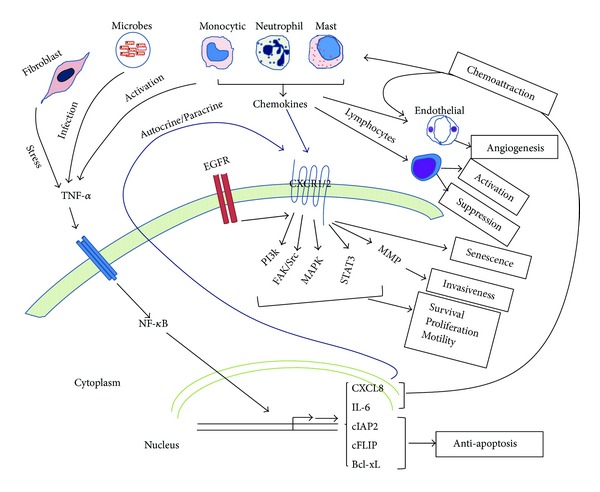Figure 1.

Principal mechanisms of CXCL8 regulation and signaling. NF-κB activation is initiated primarily by TNFα released by stressed fibroblasts, in response to chronic infection, or by activated leukocytes (monocytes, neutrophils, and mast cells). NF-κB is the primary regulator of the chemokines CXCL8 and IL-6, which are potent chemoattractants for leukocytes, especially neutrophils. Other major transcriptional targets of NF-κB include the anti-apoptosis proteins, cIAP2, cFLIP, and Bcl-xL. CXCL8 signals through CXCL1 or CXCL2, whereas IL-6 signals through the IL-6 receptor (IL-6R). Leukocytes attracted to the initiated tumor secrete cytokines that drive the tumorigenic process by promoting angiogenesis through endothelial cell proliferation and modulation of lymphocyte responses. CXCL8 directly activates endothelial cells through their CXCR1 or CXCR2 receptors. CXCL8 binds to CXCR1 and CXCR2, and, in cooperation with EGFR signaling, may promote cancer cell survival, proliferation, motility, and invasiveness through the PI3K, MAPK, FAK/Src, STAT3, or MMP pathways. Since tumor cells may also express CXCR1 or CXCR2, CXCL8, in the tumor microenvironment, may signal through both paracrine and autocrine mechanisms.
